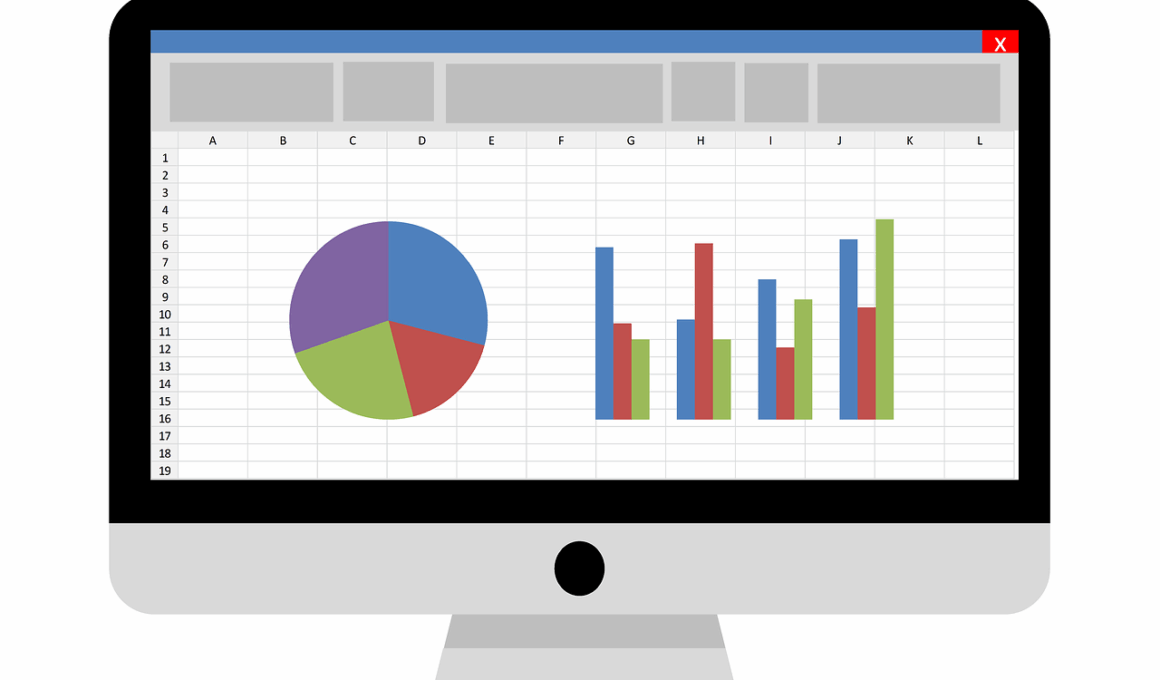How to Use Accounting Reports to Make Better Business Decisions
Many small business owners may underestimate the importance of accounting reports in managing their businesses. Accounting reports provide crucial financial data that can guide decision-making processes, enabling business owners to understand their financial position better. By analyzing vital reports such as profit and loss statements, balance sheets, and cash flow statements, entrepreneurs can identify trends and monitor business performance more closely. Understanding the components of these reports is essential for making informed choices that can lead to growth. For instance, comparing current financial results to previous periods allows owners to assess progress and pinpoint areas requiring attention. Moreover, recognizing profitable products or services helps allocate resources more effectively. Effective utilization of accounting reports can enhance strategic planning and financial forecasting. In this competitive environment, leveraging this information can mean the difference between thriving and merely surviving. Ultimately, the more informed a business owner is, the better the decisions they can make that contribute to long-term success. Embrace the power of accounting reports and take charge of your business’s financial destiny today.
Understanding profit and loss statements is vital for small business owners. This report reveals the revenue generated and the expenses incurred over a specific period, ultimately indicating the profitability or loss experienced by the business. To interpret a profit and loss statement accurately, start with gross revenue, which reflects total sales before any deductions. Subtract the cost of goods sold to determine the gross profit. Deductions like operating expenses, taxes, and interest follow suit, yielding a net profit or loss. Tracking this statement regularly can help pinpoint fluctuating trends in income and expenses. This insight enables business owners to make strategic price adjustments or minimize unnecessary costs to boost profitability. Additionally, tracking profit margins helps identify which products or services contribute most to the bottom line. Analyzing historical profit and loss data can help forecast future revenues, enhancing financial planning and budgeting. To dive into deeper analysis and comparisons, utilize tools such as financial ratios. These tools allow for comparisons against competitors or industry averages, providing a wider context for profitability understanding. Continuously reviewing profit and loss statements can inform proactive measures to enhance overall business performance.
The balance sheet serves as a snapshot of a company’s financial health at a specific point in time. It presents the business’s assets, liabilities, and equity, providing insight into how resources are allocated. Understanding the balance sheet is critical for small business owners who need to know how to balance what they own with what they owe. Assets include physical items such as inventory, equipment, and real estate, as well as intangible assets like patents or trademarks. Liabilities comprise all financial obligations, including loans, credit lines, and accounts payable, whereas equity represents the ownership interest in the company. The balance sheet’s fundamental equation, Assets = Liabilities + Equity, encapsulates the relationship between these financial components. Analyzing this report reveals liquidity levels and overall financial stability, influencing decisions such as capital investments or borrowing. Business owners should regularly monitor their balance sheets to identify financial trends, potential risks, and growth opportunities. It is crucial to ensure an optimal debt-to-equity ratio, illustrating sound financial management. A healthy balance sheet attracts prospective investors and lenders, ultimately facilitating a business’s growth by making capital readily accessible.
Cash Flow Statements: The Lifeblood of Business
Cash flow statements offer insights into how cash moves in and out, highlighting the company’s liquidity position over time. This report details the sources and uses of cash, divided into three categories: operating, investing, and financing activities. Analyzing the cash flow statement is essential because it can reveal whether a business generates enough cash to cover its costs while also pursuing growth. Positive cash flow indicates healthy financial management, whereas negative cash flow may need immediate attention. Entrepreneurs should pay close attention to cash flow from operating activities, which reflects the day-to-day income and expenses. This part of the statement is critical, as it signifies the business’s ability to maintain operations. Similarly, cash flow from investing activities reflects funds spent on assets necessary for growth, like equipment or acquisitions. Finally, cash flow from financing activities details external funding sources. Monitoring cash flow trends provides insight into cash management practices and indicates whether changes are needed. A robust understanding of cash flow ensures that business owners can meet obligations and seize opportunities promptly, paving the way for sustained success and growth.
While reporting might seem overwhelming, leveraging it for decision-making becomes manageable through consistent review practices. Setting specific times to review accounting reports allows business owners to identify trends over time. Whether monthly, quarterly, or annually, these reviews enable a business’s finance to be regularly fine-tuned. Building a consistent reporting routine helps in gaining a holistic view of the entire organization. Creating comparisons against previous periods can contextualize the developments and foster improvements. Streamlined report interpretation ensures that the owner can concentrate on actionable steps rather than merely analyzing numbers. Utilizing visuals within accounting reports, such as charts and graphs, can enhance understanding for those less familiar with financial jargon. Charts can reveal trends clearly, while graphs offer insights into performance over time, making reports accessible to a wider audience. Collaboration with teams, like finance or accounting professionals, enhances comprehension and can prompt dependence on expert opinions. This collective effort reinforces a harmonious approach to data management within the organization. Ultimately, regular practices and open communication on financial health empower business owners to make diligent choices based on reliable information.
Technology plays a crucial role in modernizing the accounting processes, allowing for significantly enhanced reporting capabilities. By utilizing accounting software, business owners can automate the generation of reports, immediate updates, and data accuracy. Dedicated software solutions streamline managing complex financial processes, enabling entrepreneurs to access timely and accurate financial information instantly. The benefits of technology extend to data visualization and interactive dashboards, which equip business owners with tools to assess performance rapidly. Reports can be customized, focusing on aspects most relevant to each particular business model. Some software programs offer real-time dashboards that display vital organ metrics at a glance, cultivating a proactive management approach. Investing in technology fosters efficient bookkeeping and saves valuable time that could be harnessed in other growth areas. Furthermore, integrating different financial applications into a single ecosystem simplifies a deeper analysis of substantial datasets. This cohesiveness leads to informed decision-making, connecting revenues directly to expenditures more effortlessly. A digitized approach to reporting provides business owners with a competitive edge, allowing them to focus on strategic planning while ensuring their finances are managed competently.
Improving Decision-Making with Accounting Reports
Utilizing accounting reports effectively can improve decision-making processes across various business areas. First, they assist in identifying successful and unsuccessful product lines, directing inventory management decisions accordingly. By analyzing sales trends and comparing costs against revenue, business owners gain a clearer sense of profitability. Strategic adjustments, including altering product pricing or discontinuing underperforming items, can boost the overall financial outcomes. Second, budgeting becomes more informed through diligent report usage. Establishing realistic budgets allows businesses to allocate resources effectively while remaining prepared for potential operational adjustments. Third, reports cultivate a better understanding of cash flow cycles, enabling them to navigate periods of heightened expenditures or slow sales. This foresight aids in maintaining stability throughout fluctuating market conditions. Lastly, fostering a culture of continuous improvement emerges as a result of regular financial monitoring. By encouraging teams to embrace the importance of accounting reports, businesses create a proactive mindset focused on improvements and growth. Overall, consistent engagement with these reports transforms financial data into actionable insights, fostering profitability, sustainability, and enhanced management practices.
In conclusion, the powerful insights derived from accounting reports empower small business owners to make better-informed decisions. Familiarizing themselves with the profit and loss statements, balance sheets, and cash flow statements significantly enhances their financial understanding. The ability to analyze trends accurately translates into strategic advantages that can foster business growth. Being proactive by regularly reviewing reports encourages an ownership mindset while revealing issues early on. Furthermore, using technology simplifies these processes, providing timely, accurate information that can make all the difference. As entrepreneurs implement the suggestions and practices detailed above, they’ll cultivate a more comprehensive approach to management and financial oversight. Leveraging accounting reports positions business owners to act decisively, based on solid data rather than gut feelings. The journey towards better financial decision-making is achievable with these practices and insights. Ultimately, a robust grasp of accounting reports paves the way toward lasting business success through clarity, improved processes, and foresight. Embrace the journey of financial empowerment and take control of your business today!


